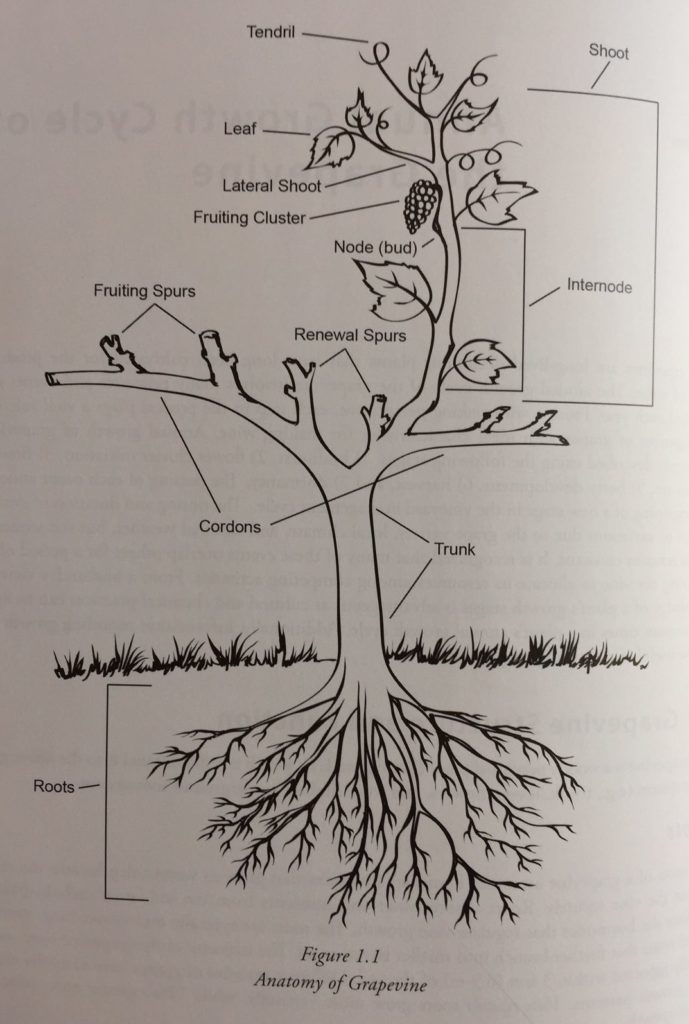Over sixty different species of grape vines exist in the world, but Vitis Vinifera is the one that wine lovers care the most about. This is the european wine grape producing vine, responsible for producing all those fabulous varieties we know and love. It is estimated that there are over five thousand different varieties of vitas vinifera.

Vitis Riparia, Rupestris and Berlandieri are all North American species that, while they aren’t used in wine making, are important nonetheless due to their phylloxera resistance, and consequently they are used as root stock, which means that the vitis vinifera is grafted onto it.
Roots: The anatomy of the grapevine appropriately begins with the roots. The roots are responsible for extracting moisture and nutrients from the soil and driving the vine’s growth. They anchor the vine to the ground and store up energy and carbohydrates that allow the vine to survive the winter and restart growth in the spring. Grapevine roots can dig into some incredibly rocky soils and can penetrate deep into the earth in quest for water, up to 20 feet.
Trunk: The trunk of the vine gives it it’s structure. This is the build up of the woody growth of the vine over the years.
Cordons: Cordons vary depending upon the trellis system used in cultivation. Commonly cordons are oriented horizontally, but the are also vertical cordon systems.
Spurs: These consist of multiple years of growth and are typically the portion of the vine where the shoots are grown. Fruiting spurs are the area where fruit bearing shoots grow. Renewal spurs are kept without fruit as reserves incase a cordon or spur needs to be removed and then regrown.
Shoots: Are the new growth that sprouts from buds in the spring. These start as tender green shoots that grow and strengthen during the season. At the end of the season these harden and turn more woody and become the canes for the next year.
Canes: Are 1 year old wood – last years shoots. Usually fruit bearing shoots only grow from the one year old canes.
Leaves: Are responsible for photosynthesis. They drive the growth of the vine in the growing season. The oxygen and glucose drive the development of the fruit. Typically 10-15 leaves are needed per shoot to maintain development of the cluster.
Nodes or Buds: Appear opposite from from where the leaves grow. These nodes are where the buds sprout next season.
Fruiting cluster: these grow from flowers first and then develop into berries.
Tendrils: are at the end of the shoots and are what cause the ones to cling to things like trellises.
Lateral shoots: These grow laterally from the shoots during the season. Typically these are removed as part of routine maintenance of the crop.